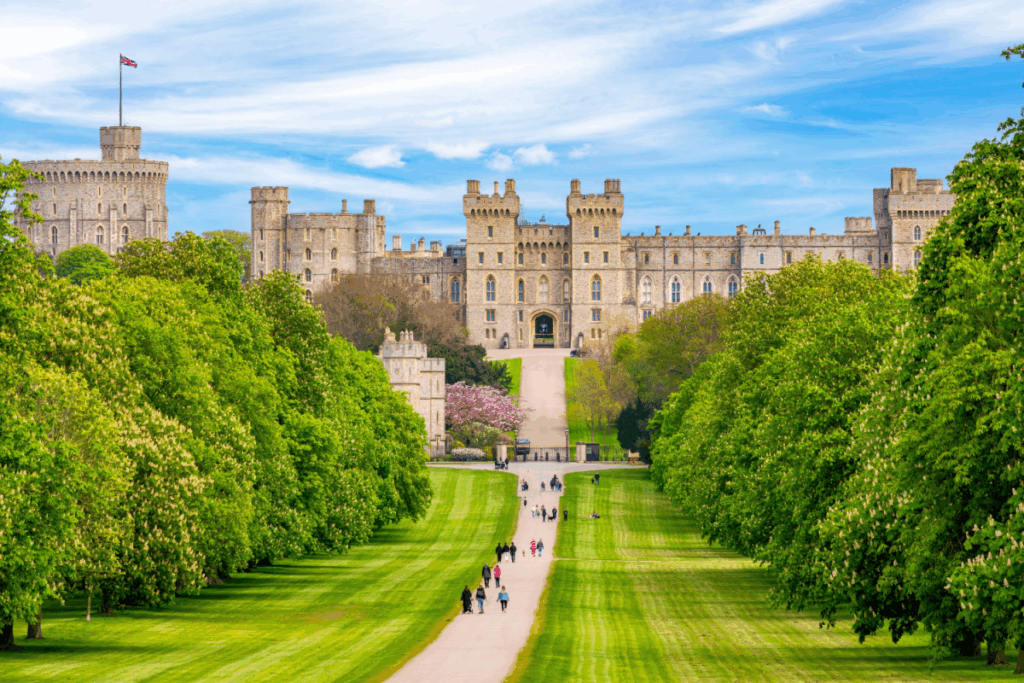Royal Symbols Taken Down as Fallout From Epstein Ties Intensifies
Prince Andrew’s banner bearing his coat of arms has been removed from St. George’s Chapel at Windsor Castle, marking another public sign of his diminishing royal status amid renewed scrutiny over his association with the late convicted sex offender Jeffrey Epstein.
The banner, which represented his membership in the Order of the Garter, was reportedly taken down earlier this week. It had hung inside the chapel’s quire — the area reserved for clergy and choir members — since Andrew became a Knight of the Garter in 2006. Only three banners now remain in that section, rearranged to fill the gap left by its removal.
A virtual tour of the chapel available online still shows the banner in place, though it is unclear when the footage was recorded.
Loss of Titles and Rising Pressure
Last Friday, Prince Andrew announced that he would no longer use his royal titles, including Duke of York, following the publication of a posthumous memoir by Virginia Giuffre, titled Nobody’s Girl. The book revisited allegations that Andrew had sexually assaulted Giuffre — claims he has consistently and strongly denied.
“The continued accusations about me distract from the work of His Majesty and the Royal Family,” the prince said in an October 17 statement. “I vigorously deny the accusations against me.”
Andrew’s decision to abandon his titles and step back further from royal life comes amid mounting calls for more drastic measures, including the formal stripping of his remaining honors and possible eviction from Royal Lodge, his long-time residence in Windsor Great Park.
Financial Controversies Deepen Scrutiny
The prince’s reputation has been further damaged by revelations from High Court documents showing that he received £60,500 from British businessman Adrian Gleave in December 2019, shortly after his disastrous BBC Newsnight interview that led to his withdrawal from public duties. Gleave has been linked to a wealth management company accused of defrauding pension savers.
In addition, Companies House filings show that Andrew has removed his royal designations from official business documents, changing his name from “HRH The Duke of York KG” to simply “Prince Andrew” in filings for his entrepreneurial initiative Pitch@Palace.
Political and Police Scrutiny Intensifies
Public pressure on the government to address Andrew’s privileges is growing. Opposition MPs have demanded a parliamentary debate over the prince’s taxpayer-subsidized residence and continued royal benefits, but the government has declined to allocate time for discussion.
Meanwhile, the Metropolitan Police confirmed it is “actively reviewing” reports suggesting that Prince Andrew may have sought personal information about Ms. Giuffre through his police protection team — an allegation that, if proven, could deepen the crisis surrounding him.
A Symbol of Royal Retreat
The Order of the Garter, established in 1348, is Britain’s oldest and most prestigious order of chivalry. It includes senior royals and select figures who have made exceptional contributions to national life, among them former prime ministers Sir Tony Blair and Sir John Major.
By removing Andrew’s banner from its historic home in St. George’s Chapel — where generations of royals have been honored — the monarchy has delivered a highly visible message that his role in public life continues to contract.
With his titles relinquished, honors removed, and residence under scrutiny, Prince Andrew’s retreat from the center of royal life appears nearly complete. The question now facing Buckingham Palace is whether symbolic gestures will be enough to stem the growing demand for full accountability.


